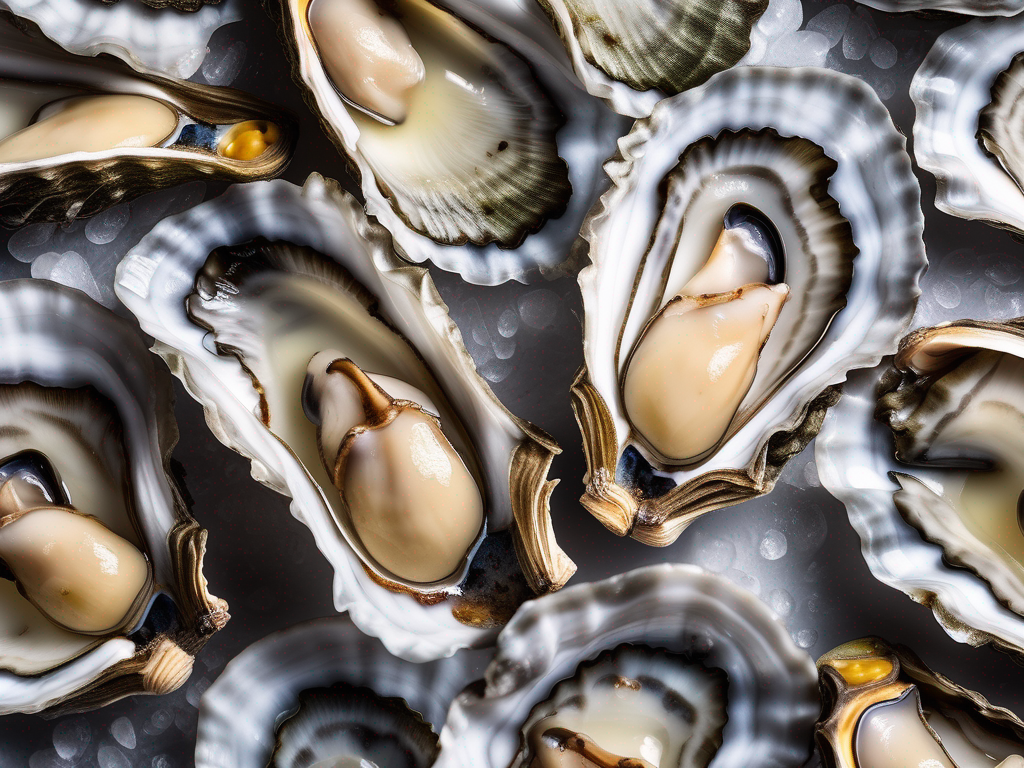
Signs that Fresh Shucked Oysters Have Gone Bad
Get Your Free Food Safety Cheat Sheet
30 most common foods with instant answers. Print it and stick it on your fridge—completely free!
Signs that Fresh Shucked Oysters Have Gone Bad
Oysters are a popular delicacy enjoyed by many seafood lovers around the world. Whether you like them raw, grilled, or fried, it's crucial to ensure that the oysters you consume are fresh and safe to eat. Freshly shucked oysters can spoil quickly if not stored and handled properly. In this blog post, we will discuss the signs that fresh shucked oysters have gone bad, and how to prevent spoilage to ensure a safe and enjoyable dining experience. (Oysters fresh shucked)
Understanding Fresh Shucked Oysters
Fresh shucked oysters refer to oysters that have been shucked or opened, removing the shell and making the succulent meat inside accessible for consumption. Oysters are highly perishable and require careful handling to maintain their freshness and quality. When oysters go bad, they can pose serious health risks due to the growth of harmful bacteria such as Vibrio parahaemolyticus.
Signs that Fresh Shucked Oysters Have Gone Bad
1. Foul Odor
- A strong, unpleasant odor is a clear indication that fresh shucked oysters have gone bad. If the oysters smell fishy, sour, or sulfurous, it's best to discard them immediately.
2. Slimy Texture
- Fresh shucked oysters should have a firm and slightly slippery texture. If the oysters feel excessively slimy or sticky to the touch, it's a sign of spoilage.
3. Discoloration
- Healthy fresh shucked oysters should have a creamy, off-white color. Any discoloration, such as dark spots or a grayish hue, indicates that the oysters have deteriorated.
4. Open Shells
- When fresh shucked oysters have gone bad, their shells may remain open. Live oysters naturally close their shells tightly when tapped or handled. If the shells are gaping or do not close when touched, it's best to avoid consuming them.
5. Unusual Texture
- Fresh shucked oysters should have a plump and juicy texture. If the oysters appear shriveled, mushy, or unusually soft, it's a sign of spoilage.
Tips for Storing Fresh Shucked Oysters
To prevent fresh shucked oysters from going bad and ensure their safety for consumption, follow these essential storage tips:
1. Refrigerate Immediately
- After shucking oysters, refrigerate them promptly at a temperature of 40°F (4°C) or below to slow down bacterial growth.
2. Store in a Container
- Place the fresh shucked oysters in a shallow container and cover them with a damp cloth or paper towel to keep them moist.
3. Use Ice Packs
- If transporting fresh shucked oysters, pack them in a cooler with ice packs to maintain a cold temperature and prevent spoilage.
4. Consume Promptly
- Fresh shucked oysters are best consumed within 1-2 days of shucking to enjoy their optimal freshness and flavor.
5. Check for Quality
- Before consuming fresh shucked oysters, inspect them for any signs of spoilage as mentioned above to ensure they are safe to eat.
Conclusion
In conclusion, fresh shucked oysters are a delectable seafood treat that should be enjoyed responsibly to avoid foodborne illnesses. By being mindful of the signs that indicate fresh shucked oysters have gone bad, and following proper storage and handling practices, you can savor these succulent mollusks safely. Remember to trust your senses and prioritize food safety when it comes to consuming fresh seafood like oysters.
For more information on [oysters fresh shucked](/food/oysters fresh shucked), visit our website. Enjoy your oysters responsibly and stay safe! (Oysters fresh shucked)
Authoritative Food Safety References
These agencies and university labs inform every tip and health precaution we publish.
USDA FoodKeeper – Cold Storage Guidelines
Official refrigerator, freezer, and pantry timelines maintained by the U.S. Department of Agriculture.
Visit USDA FoodKeeperFDA Produce Safety Rule & Grower Guidance
Field-to-fridge handling practices that prevent contamination of fruits, vegetables, and leafy greens.
Visit FDA Produce SafetyCDC Foodborne Illness Prevention Hub
Surveillance-backed guidance on pathogens, symptoms, and steps to reduce foodborne illness risk.
Visit CDC Food SafetyUC Davis Postharvest Technology Center
University research detailing optimal storage atmospheres for produce after harvest.
Visit UC Davis PostharvestPenn State Extension – Home Food Preservation & Safety
Peer-reviewed extension bulletins on safe canning, chilling, and reheating practices.
Visit Penn State ExtensionGet Your Free Food Safety Cheat Sheet
30 most common foods with instant answers. Print it and stick it on your fridge—completely free! Want more? Upgrade to the complete guide with 70+ foods.
Scan your food directly and get instant safety info using our AI-powered camera feature.